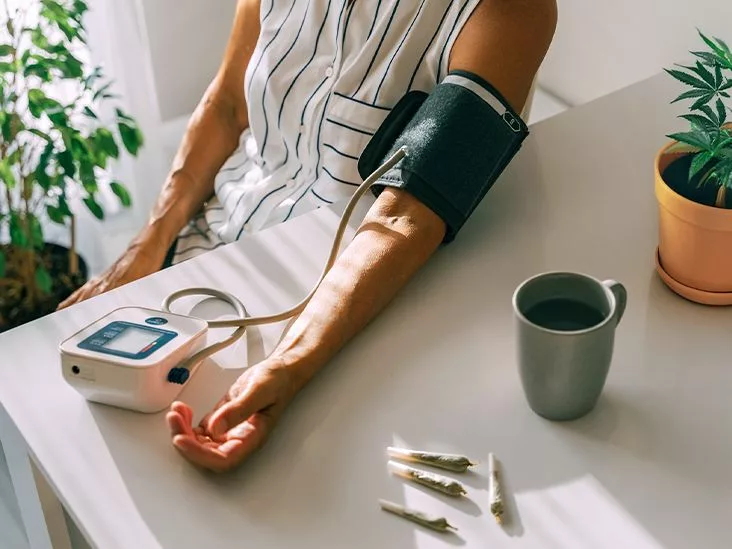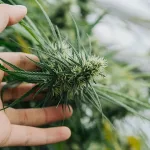Hey there, friend. If you’ve ever wondered whether lighting up could nudged your blood pressure up, down, or just keep it cruising somewhere in the middle, you’re in the right spot. The short answer? Marijuana can both raise and lower blood pressure, and the outcome depends on what’s in your jar, how you take it, and where you’re at health‑wise. Let’s untangle the science, share a few stories, and give you practical tips so you can make choices that feel right for your heart.
Cannabis and the Heart
What blood pressure really means
Blood pressure is the force your heart uses to push blood through arteries. It’s expressed as two numbers: systolic (the pressure when the heart contracts) over diastolic (the pressure when the heart rests). Normal is usually under 120/80 mmHg; anything higher drifts into the “elevated” or “hypertension” zones and can raise the risk of stroke, heart attack, and kidney disease.
The endocannabinoid system’s role
Our bodies host an endocannabinoid system (ECS) that helps regulate everything from appetite to mood – and yes, vascular tone. THC (tetrahydrocannabinol) and CBD (cannabidiol) are the two most talked‑about cannabinoids. THC binds to CB1 receptors in the brain and can speed up heart rate, while CBD is more of a soothing agent that often relaxes blood vessels.
THC vs. CBD: the basic showdown
Think of THC as the “party starter” and CBD as the “chill‑out captain.” When THC kicks in, you might feel a rapid heartbeat and a brief surge in blood pressure. Switch to CBD, and many users notice a gentle drop in systolic numbers, possibly because the compound eases anxiety and dilates blood vessels. This contrast is why we keep seeing both “THC increase blood pressure” and “CBD lower blood pressure” in the literature.
Acute THC Spike
What the spike looks like
Right after you inhale or ingest a high‑THC product, studies show a short‑term rise in systolic pressure – often 3‑7 mmHg – that peaks within the first hour. Consensus academic review highlighted a 5 mmHg average increase in a large sample of U.S. adults.
Why your heart races
THC stimulates the sympathetic nervous system, the same pathway that fires up during a coffee buzz or a sprint. The result? Faster heartbeats (often called “marijuana heart rate”) and that temporary pressure bump. If you’ve ever felt “wired” after a strong joint, you’ve experienced this physiologic kick.
Postural hypotension – the “white‑out”
Interestingly, once you’re standing up, THC can sometimes cause the opposite – a sudden dip in blood pressure that leaves you light‑headed. Dr. Bonni Goldstein, a medical adviser on Weedmaps, described this as a “postural hypotension” where the pressure falls as you shift from lying down to standing, sometimes called a “green out.”
Long‑Term Blood Pressure Trends
Does tolerance tame the spike?
Regular users often report that the initial surge fades as their bodies adapt. Tolerance builds fairly quickly, meaning the same THC dose will provoke a milder response over weeks or months. This doesn’t guarantee safety, but it explains why long‑term data can appear mixed.
Can CBD truly lower pressure?
Research on CBD is far more optimistic. In a 2.5‑week trial, chronic CBD administration reduced both 24‑hour mean systolic and diastolic pressures in patients with hypertension according to a consensus review. The effect isn’t dramatic (around 4‑6 mmHg) but it’s consistent enough that clinicians are taking notice.
Mixed findings across age groups
Older adults with hypertension sometimes see a net reduction of about 5 mmHg systolic after regular cannabis use, while younger, healthier cohorts may experience only the fleeting spike. The table below captures a snapshot of key studies.
| Year | Study Type | Population | Main Finding (BP) | Cannabinoid Focus |
|---|---|---|---|---|
| 2021 | 24‑hr ambulatory (older adults) | 120 pts w/ hypertension | ↓ 5 mmHg systolic, ↓ 4.5 mmHg diastolic | Whole‑plant cannabis |
| 2022 | Cross‑sectional (U.S. adults) | 20 k users | ↑ ≈2 mmHg systolic after recent use | THC‑dominant |
| 2023 | Meta‑review of 200 M papers | Various | Acute ↑ BP, chronic ↓ BP with CBD | THC vs CBD |
| 2024 | Observational (regular users) | 5 k participants | Short‑term ↑, long‑term ↓ in tolerant users | Mixed ratios |
Most At Risk
People already diagnosed with hypertension
If your doctor has already labeled you “high blood pressure,” THC’s temporary surge could push you into risky territory, especially if you combine it with caffeine, nicotine, or stressful situations. Anxiety triggered by a high‑THC dose can also spike numbers.
Young adults with no prior issues
Even if you’re otherwise healthy, the acute increase still matters. The American Heart Association flags any sudden spike as a potential trigger for heart rhythm irregularities, particularly in people with hidden cardiac conditions.
Medication interactions
Blood‑pressure meds (like beta‑blockers or ACE inhibitors) can interact with cannabinoids, sometimes enhancing the drop in pressure or, conversely, the rise. Always chat with your prescriber before adding cannabis into the mix.
Real‑world anecdote
Take Maya, a 45‑year‑old accountant who started using a high‑THC edible to unwind after work. Within 45 minutes, her home cuff read 138/92 mmHg – a jump from her usual 122/78 mmHg. After switching to a 10 mg CBD tincture, her readings settled at 115/72 mmHg, and she felt calmer during the evening. Maya’s story mirrors many who find the “cannabis hypertension” label applies more to THC than to CBD.
Safer Cannabis Use Tips
How to monitor yourself
Buy a reliable automatic cuff, take a reading before you consume, then again 30‑60 minutes after. Note the heart rate too – a rise of more than 20 bpm could signal a strong THC effect.
Choosing the right product
- Low‑THC / high‑CBD strains – ideal if you’re watching your numbers.
- Vaporizer vs. edible – vaping delivers THC quickly (spike faster), while edibles have a slower onset, giving you a longer window to notice changes.
- Micro‑dosing – start with 2.5‑5 mg THC, wait an hour, and assess how you feel.
Dosage tricks to keep spikes small
Stick to “one puff” or “a half‑dose” instead of “the whole bowl.” The lower the dose, the less likely you’ll see a dramatic pressure jump. Pair cannabis with deep‑breathing or a short walk; both help stabilize heart rate.
Quick Checklist
- Check baseline BP first.
- Prefer CBD‑rich or balanced products.
- Start low, go slow.
- Track heart rate & BP for 2‑3 days.
- Talk to your doctor if you have cardiovascular meds.
Key Study Findings
What the science really says
Across the board, the consensus is clear: THC can cause an acute increase in blood pressure and heart rate, while chronic CBD use shows modest but consistent reductions in both systolic and diastolic numbers. The variability in results often hinges on dosage, method of consumption, and individual tolerance.
Why results differ
Factors that throw the data curve include:
- Differences in THC:CBD ratios.
- Smoking versus oral ingestion (smoking spikes faster, oral is delayed).
- Population studied (older hypertensive vs. young healthy).
- Duration of use (single use vs. months of regular use).
Final Takeaway Summary
Bottom line: marijuana isn’t a one‑size‑fits‑all answer for blood pressure. If you’re curious, start with a low‑THC, high‑CBD product, keep a log of your numbers, and stay in touch with a healthcare professional. The heart loves balance, and the same goes for cannabinoids – a little can lift you, too much can push you over the edge.
What’s your experience with cannabis and blood pressure? Have you noticed a spike after a strong edible, or perhaps a calming dip from a CBD tincture? Drop a comment, share your story, or ask any lingering questions – I’m here to keep the conversation rolling.


















Leave a Reply
You must be logged in to post a comment.